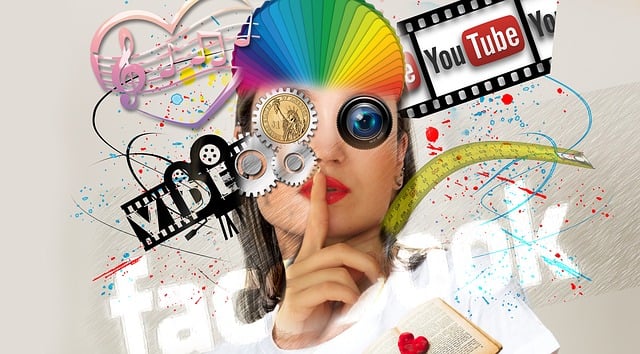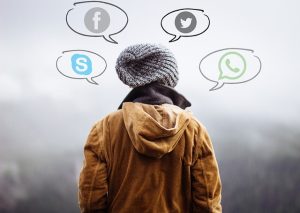Image by Gerd Altmann
Matt Taibbi talked in London about what he and Michael Shellenberger found in the Twitter files. He realized the free speech battle has evolved into something new — where reality is altered and people are coached into forgetting what they saw, and censoring themselves. A kind of mass digital brainwashing.
In the Twitter Files there was a sinister pattern of “deamplifying” people’s true stories, their experiences, and then deamplifying the person themselves. Running parallel with this was a program to reduce our language, our world into a polarized one-nil, good-bad, us-them division where all shades of complexity were extinguished — so people who had vaccines but didn’t like mandates were anti-vaxxers, and people who had some vaccines, the injured, the unvaccinated — were all “anti-vaxxers”. This was a dystopia George Orwell predicted — the binary existence where there are no shades of gray. There is no safe middle ground. There is only rightthink and wrongthink.
The Elite War on Free Thought
Matt Taibbi, Racket News
Michael and I are here to tell a horror story that concerns people from all countries.
What Michael and I were looking at [in The Twitter files] was something new, an Internet-age approach to political control that uses brute digital force to alter reality itself. We certainly saw plenty of examples of censorship and de-platforming and government collaboration in those efforts. However, it’s clear that the idea behind the sweeping system of digital surveillance combined with thousands or even millions of subtle rewards and punishments built into the online experience, is to condition people to censor themselves.
In fact, after enough time online, users will lose both the knowledge and the vocabulary they would need to even have politically dangerous thoughts. What Michael calls the Censorship-Industrial Complex is really just the institutionalization of orthodoxy, a vast, organized effort to narrow our intellectual horizons.
Stanford Uni operated The Virality Project, where Google, Twitter and Facebook shared notes to work to suppress any realities the elite or Deep State didn’t want people to share:
They compared notes on how to censor or deamplify certain content. The ostensible mission made sense, at least on the surface: it was to combat “misinformation” about the pandemic, and to encourage people to get vaccinated. When we read the communications to and from Stanford, we found shocking passages.
One suggested to Twitter that it should consider as “standard misinformation on your platform… stories of true vaccine side effects… true posts which could fuel hesitancy” as well as “worrisome jokes” or posts about things like “natural immunity” or “vaccinated individuals contracting Covid-19 anyway.”
The language erases the spectrum of opinions and leaves only Good and unGood labels:
A person who talks about being against vaccine passports may express support for the vaccine elsewhere, but the Virality Project believed “concerns” about vaccine passports were driving “a larger anti-vaccination narrative,” so in this way, a pro-vaccine person may be anti-vax.
This deters people from tinkering with mild “alternate opinions”. It’s been going on for years in the skeptical world. All skeptics are “climate deniers”, even if they agree with the IPCC and just think the economics of climate change is bonkers.
The Good People and The UnGood
When the binary reduction is applied to people then a person becomes the bad thing they said once — one wrong opinion means everything they say is suspect. As Taibbi says:
We saw NGOs and agencies like the FBI or the State Department increasingly targeting speakers, not speech. The Virality Project brought up the cases of people like Robert F. Kennedy, Jr. The posts of such “repeat offenders,” they said, are “almost always reportable.” They encouraged content moderators to make assumptions about people, and not to look on a case-by-case basis. In other words, they saw good and ungood people, and the ungood were “almost always reportable.”
It is cancel culture today. In the stoneage, it was ostracism. It’s very effective.
The Social Media Social-Credit-Score
A form of the Chinese Social Credit Score is already here. Social media companies were scoring people and putting some of them on blacklists, and then in some cases even blacklisting others in their networks. It is guilt by association.
Over and over we saw algorithms trying to electronically score a person’s good-or-ungoodness. We found a Twitter report that put both Wikileaks and Green Party candidate Jill Stein in a Twitter “denylist,” a blacklist that makes it harder for people to see or search for your posts. Stein was put on a denylist called is_Russian because an algorithm determined she had too many beliefs that coincided with banned people, especially Russian banned people.
“It’s more than a speech crisis, it’s a humanity crisis”
If you apply these techniques fifty million, a hundred million, a billion times, or a billion billion times, people will soon learn to feel how certain accounts are deamplified, and others are not. They will self-sort and self-homogenize.
We’re building a global mass culture that sees everything in black and white, fears difference, and abhors memory. It’s why people can’t read books anymore …
We have been complaining about censorship, and it’s important to do that. But they are taking aim at people in a way that will make censorship unnecessary, by building communities of human beings with no memory and monochrome perception. This is more than a speech crisis. It’s a humanity crisis. I hope we’re not too late to fix it.
Read it all on Matt Taibbi’s blog “Racket Media”.
h/t David E
Social Media Eye by Gerd Altmann | Photo by Mike Renpening | Icons by Arek Socha


